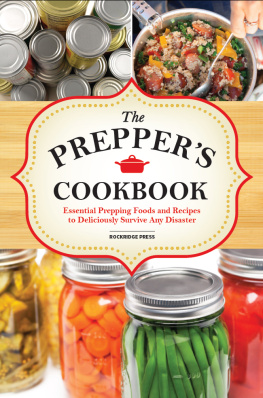Dehydrator Cookbook
Liam T. Harris
Copyright 2022 by Paul T.Smith - All rights reserved .
This document is geared towards providing exact and reliable information in regard to the topic and issue covered.
- From a Declaration of Principles which was accepted and approved equally by a Committee of the American Bar Association and a Committee of Publishers and Associations.
In no way is it legal to reproduce, duplicate, or transmit any part of this document in either electronic means or in printed format. All rights reserved.
The information provided herein is stated to be truthful and consistent, in that any liability, in terms of inattention or otherwise, by any usage or abuse of any policies, processes, or directions contained within is the solitary and utter responsibility of the recipient reader. Under no circumstances will any legal responsibility or blame be held against the publisher for any reparation, damages, or monetary loss due to the information herein, either directly or indirectly.
Respective authors own all copyrights not held by the publisher.
The information herein is offered for informational purposes solely and is universal as so. The presentation of the information is without contract or any type of guarantee assurance.
The trademarks that are used are without any consent, and the publication of the trademark is without permission or backing by the trademark owner. All trademarks and brands within this book are for clarifying purposes only and are owned by the owners themselves, not affiliated with this document.
Table of Contents
INTRODUCTION
What exactly is a food dehydrator?
A food dehydrator is used to dry unripe fruit, vegetables, herbs, meat, and fish. Warm air is circulated around the food trays by the fan. The weaving, open design of the trays lets air to circulate freely around the food, allowing water to drain equally from all sides.
Food is protected and has a longer shelf life when moisture is removed from it. All dehydrated meals should be stored in an airtight container that is cold and dry.
What functions does a food dehydrator have?
Dehydrated foods are infinitely versatile. Most fruits may be dried and used to make tasty snacks or baked goods. Extra grapes may be dried and used in BBC Good Food's sticky date and raisin pudding or made into fruit leather for a nutritious snack.
Dried mushrooms are an excellent example of a dehydratible vegetable that complements mushroom risotto.
If you just have a few herbs, dehydrating them is a fine alternative, but the arena won't need them anytime soon. Instead of fresh herbs, dried herbs are used in the recipe for grilled salmon with mint and dill sauce.
Toss a dried lime slice on the side of your next gimlet or use a stained glass-like interior to garnish a show-stopping lemon pie.
What should a food dehydrator have?
Size: The dehydrators we evaluated ranged in size from small enough to fit in a toaster to behemoths that needed their own counter area. Before purchasing a dehydrator, consider your available space.
Take into account the number of trays and the amount of dehydration needed. A dehydrator with six or more trays is required for large volumes. If you just dehydrate sometimes (or don't have much room), you only need four or five trays.
Duration of the timer: Most fruits and vegetables should be dehydrated in a dehydrator with a 12-hour timer. A timer set for at least 24 hours is required to dehydrate plants.
How do we put food dehydrators through their paces?
Dehydrators were evaluated based on their product design, quality of results, and convenience of use.
To be safe, we dehydrated apples, lemons, and basil, as well as BBC Good Food's fruit leather. All ingredients were chopped to the prescribed sizes in the handbook, and the dehydrator was set to the appropriate temperature and duration.
We assessed each model on four criteria:
Configuration Do you have any questions about putting the dehydrator together? What size is the counter? Is it simple to maintain? What is its height?
Usability and usefulness are critical considerations. Remember how responsive and straightforward the controls are? Can any parts be cleaned quickly in the dishwasher?
Results. One of the most important questions. They were consistently dried, had the appropriate texture, were not discolored, and had a concentrated and amplified taste.
Manual. Because these are specialized items of equipment, we expected detailed user instructions.
Chapter 1. RECIPES

Powdered Dried Onion
Preparation Time30 mins
Cooking Time12 hrs
Ingredients
Fresh Onions
Preparation
- Wash the onions after removing the papery skin. Allow the greens to dry as well if they are still linked.
- Onion slices should be 18 to 14 inches long and should not overlap on dehydrator racks.
- In a food dehydrator set to 100 to 130 degrees Fahrenheit, dry onions until completely dry. The slices should not bend, but rather snap and split in two crisply.
- To dry, spread onions in a thin layer on a baking pan coated with parchment paper. Preheat the oven to 140F and bake until the potatoes are crisp and dry. It is advised that the onion pieces be mixed and re-spread every 30 minutes. We've never done it, but we've heard it takes some time.
- After the onions have completely dried, place them in a blender or food processor and pulse until they have acquired the desired powder consistency.
- After storing the crushed onion powder in an airtight container for a year, use it within a year.
Strawberries Dehydrated
Time to Prepare: 10 minutes
Time to cook: 8 hours
Total Time: 8 hours 10 minutes
Ingredients
1 pound strawberries
lemon juice or sugar (optional topping)
Preparation
- Strawberries should be washed, dried, and hulled before cooking (stems cut). Using a sharp knife, cut each strawberry into thin slices about 1/8" thick. Make the slices as close in size and thickness as possible to ensure that they dry at the same rate. When you've finished slicing all of the strawberries, arrange them on the dehydrator rack until the entire level is full. Fill all layers with strawberry slices, leaving enough space between them to allow air to circulate. Sugar or lemon juice can be sprinkled on top if desired, but it is not required.
- Set the dehydrator to 135F and cover it. It will take anywhere from 6 to 10 hours to completely dehydrate the strawberries. Begin checking them after 6 hours. It's best if they're slightly rubbery but not wet. They'll become crispy after they've cooled. Smaller portions may need to be dehydrated first, while larger portions may require a little more time.
- Store in an airtight container in a cool, dark place.
Notes
The time required is determined by the thickness of the slices, the weather, the outside and interior temperatures at the time, and the dehydrator.
Always read the instructions for your dehydrator and follow all safety precautions.
Nutritional value ( Serving: 2 tbsp )
17 kilocalories| 4.1g carbohydrate| 0.6g protein |0.3g Fat| 1mg sodium |1g fiber |2.5g sugar| 86mg potassium |8 mg calcium
Carrots Dehydrated
Preparation time : 20 mins
Cooking time : 7 hrs
Total Time: 7 hrs 20 mins
Ingredients
1-5 lbs carrots
Preparation
- Carrots should be rinsed and cut at the ends. Any flaws should be addressed. Peeling is not necessary.

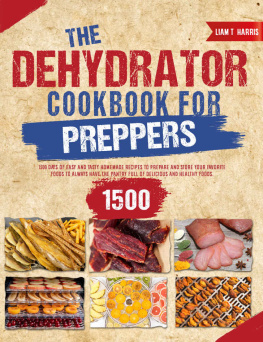
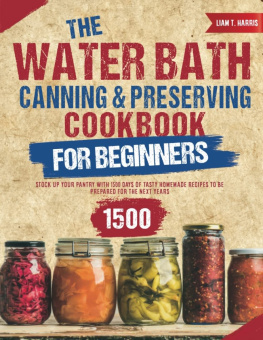
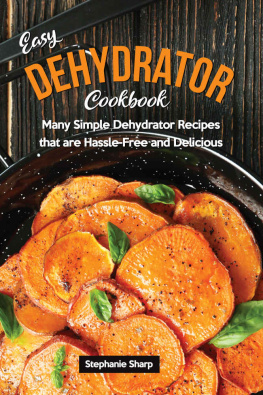



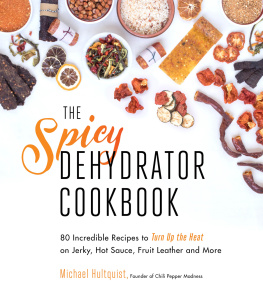
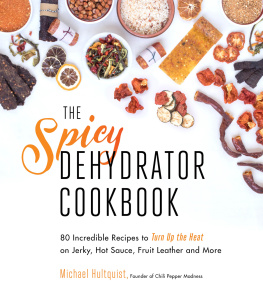
![Tammy - The ultimate dehydrator cookbook : [the complete guide to drying food, plus 398 recipes, including making jerky, fruit leather, and just-add-water meals]](/uploads/posts/book/102970/thumbs/tammy-the-ultimate-dehydrator-cookbook-the.jpg)
